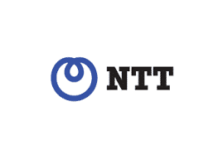Supporting Business Functions in an Enterprise with Information
The principal business functions in a business firm are:
1. Marketing and sales
2. Production
3. Accounting and finance
4. Human resources
Outlines a general view of information systems supporting a company’s operations and management. Emphasize that management support systems (MRS), decision support systems (DSS), and executive information systems (EIS), rest on the foundation of transaction processing systems (TPS) that support business operations. Professional support systems (PSS) and office information systems (OIS).
Marketing Information Systems
1. Product
2. Price
3. Place
4. Promotion
illustrates the structure of the entire marketing information system.
Sources of Data and Information for Marketing: Boundary-Spanning and Transaction Processing Subsystems
The objective of marketing research is to collect data on the actual customers and the potential customers, known as prospects. The identification of the needs of the customer is a fundamental starting point for total quality management (TQM). Electronic commerce on the WEB makes it easy to compile statistics on actual buyer behavior.
Marketing research software supports statistical analysis of data. It enables the firm to correlate buyer behaviour with very detailed geographic variables, demographic variables, and psychographic variables.
Marketing (competitive) intelligence is responsible for the gathering and interpretation of data regarding the firm’s competitors, and for the dissemination of the competitive information to the appropriate users. Most of the competitor information comes from corporate annual reports, media-tracking services, and from reports purchased from external providers, including on-line database services. The Internet has become a major source of competitive intelligence.
Marketing Mix Subsystems
The marketing mix subsystems support decision making regarding product introduction, pricing, promotion (advertising and personal selling), and distribution.
Marketing mix subsystems include:
1. Product subsystem
2. Place subsystem
3. Promotion subsystem
4. Price subsystem
5. Sales forecasting
Product Subsystem
The product subsystem helps to plan the introduction of new products. Continually bringing new products to market is vital in today’s competitive environment of rapid change.
1. Professional support systems assist designers in their knowledge work.
2. With a DSS, a marketing manager can score the desirability of a new product.
3. Electronic meeting systems help bring the expertise of people dispersed in space and time to bear on the problem
4. Information derived from marketing intelligence and research is vital in evaluating new product ideas.
Place Subsystem
The place subsystem assists the decision makers in making the product available to the customer at the right place at the right time. The place subsystem helps plan the distribution channels for the product and track their performance.
The use of information technology has dramatically increased the availability of information on product movement in the distribution channel. Examples include:
1. Bar-coded Universal Product Code (UPC)
2. Point-of-sale (POS) scanning
3. Electronic data interchange (EDI)
4. Supports just-in-time product delivery and customized delivery
Promotion Subsystem
The Promotion Subsystem is often the most elaborate in the marketing information system.
Database marketing
A relies on the accumulation and use of extensive databases to segment potential customers and reach team with personalized promotional information.
The role of telemarketing, marketing over the telephone, has increased. telemarketing calls are well supported by information technology.
Sales force automation,
the involves equipping salespeople with portable computers tied into the corporate information systems. This gives the salespeople instantaneous access to information and frees them from the reporting paperwork. This increases selling time and the level of performance.
Price Subsystem
Pricing decisions find a degree of support from DSSs and access to databases that contain industry prices.
Sales Forecasting
The actual sales will depend to a large degree on the dynamics of the environment.
Sales forecasting uses numerous techniques, which include:
1. Scenario analysis in which each scenario in this process is a plausible future environment
2. Extrapolation of trends and cycles through a time-series analysis.
Manufacturing Information Systems
1. Lean – highly efficient, using fewer input resources in production through better engineering and through production processes that rely on low inventories and result in less waste.
2. Agile – fit for time-based competition.
3. Flexible – able to adjust the product to a customer’s preferences rapidly and cost effectively.
Structure of Manufacturing Information Systems
Information technology must play a vital role in the design and manufacturing processes.
Manufacturing information subsystems include:
1. Product design and engineering
2. Product scheduling
3. Quality control
4. Facilities planning, production costing, logistics and inventory subsystems
Product Design and Engineering
The produced designs are subject to processing with CAE systems to ensure their quality, safety, manufacturability, and cost-effectiveness. As well, the combined techniques of CAD/CAE and rapid prototyping cut time to market.
Product Scheduling
Production scheduling is the heart of the manufacturing information system.
Computer integrated manufacturing (CIM) is a strategy through which a manufacturer takes control of the entire manufacturing process. A manufacturing system based on this concept can turn out very small batches of a particular product as cost-effectively as a traditional production line can turn out millions of identical products. A full-fledged CIM is extremely difficult to implement.
Quality Control
The quality control subsystem of a manufacturing information system relies on the data collected on the shop floor by the sensors embedded in the process control systems.
Total quality management (TQM) is a management technique for continuously improving the performance of all members and units of a firm to ensure customer satisfaction.
Facilities Planning, Production Costing, Logistics and Inventory Subsystems
Among the higher-level decision making supported by manufacturing information systems are facilities planning – locating the sites for manufacturing plants, deciding on their production capacities, and laying out the plant floors.
Manufacturing management requires a cost control program, relying on the information systems. Among the informational outputs of the production costing subsystem are labor and equipment productivity reports, performance of plants as cost centers, and schedules for equipment maintenance and replacement.
The essential functions that financial information systems perform include:
1. Financial forecasting and planning
2. Financial controls
3. Funds management
4. Internal auditing
Financial Forecasting
The process of predicting the inflows of funds into the company and the outflows of funds from it for a long term into the future.
Financial Controls
The primary tools of financial control are budgets. A budget specifies the resources committed to a plan for a given project or time period. Flexible budgets commit resources depending on the level of activity.
Spreadsheet programs are the main budgeting tools. Spreadsheets are the personal productivity tools in use today in budget preparation.
In the systems-theoretic view, budgets serve as the standard against which managers can compare the actual results by using information systems. A performance report states the actual financial results achieved by the unit and compares them with the planned results.
Along with budgets and performance reports, financial control employs a number of financial ratios indicating the performance of the business unit. A widely employed financial ratio is return on investment (ROI). ROS shows how well a business unit uses its resources.
Internal Auditing
The audit function provides an independent appraisal of an organization’s accounting, financial, and operational procedures and information. All large firms have internal auditors, answerable only to the audit committee of the board of directors. The staff of the chief financial officer of the company performs financial and operational audits.




